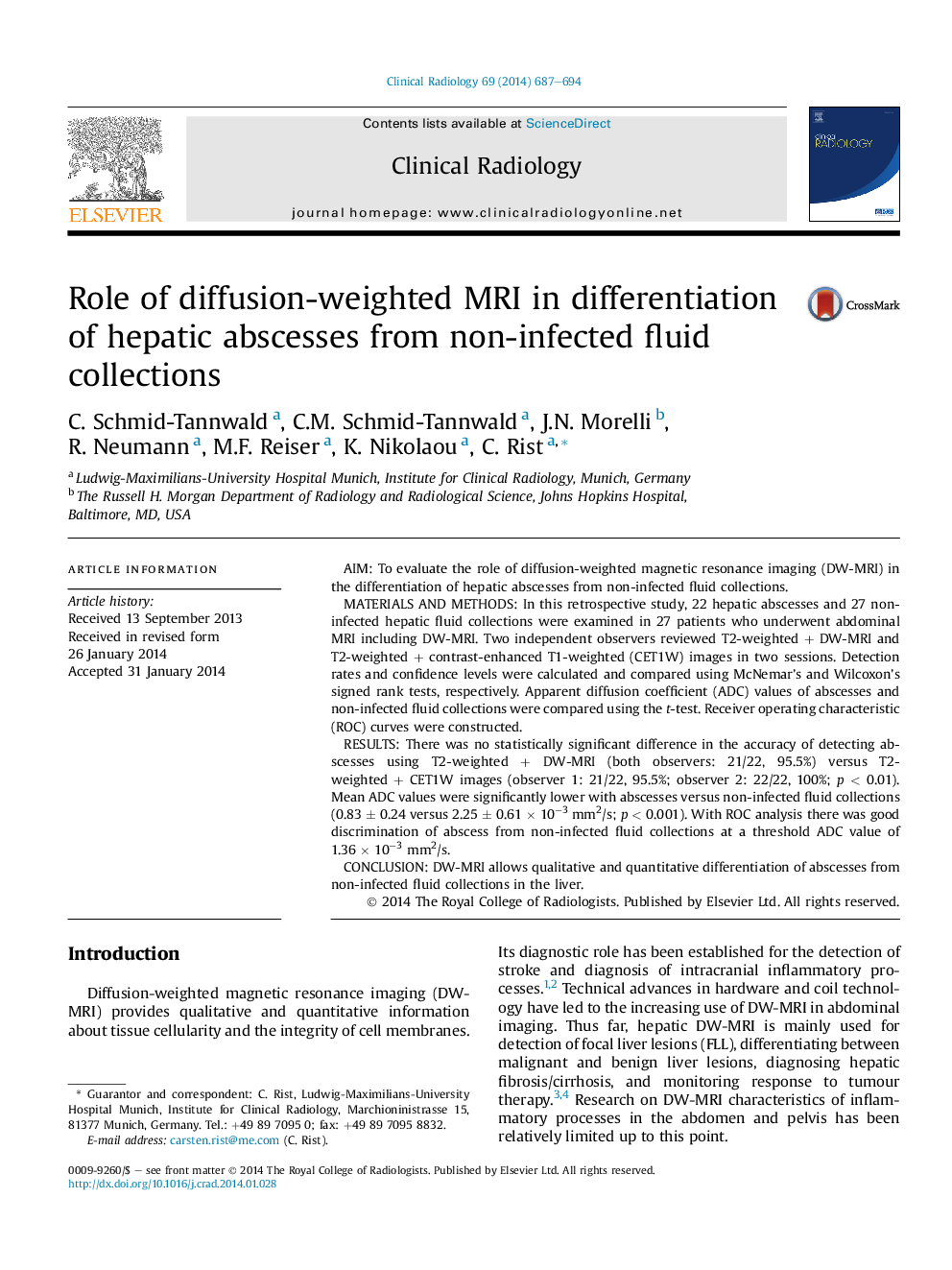| Article ID | Journal | Published Year | Pages | File Type |
|---|---|---|---|---|
| 3981923 | Clinical Radiology | 2014 | 8 Pages |
AimTo evaluate the role of diffusion-weighted magnetic resonance imaging (DW-MRI) in the differentiation of hepatic abscesses from non-infected fluid collections.Materials and methodsIn this retrospective study, 22 hepatic abscesses and 27 non-infected hepatic fluid collections were examined in 27 patients who underwent abdominal MRI including DW-MRI. Two independent observers reviewed T2-weighted + DW-MRI and T2-weighted + contrast-enhanced T1-weighted (CET1W) images in two sessions. Detection rates and confidence levels were calculated and compared using McNemar's and Wilcoxon's signed rank tests, respectively. Apparent diffusion coefficient (ADC) values of abscesses and non-infected fluid collections were compared using the t-test. Receiver operating characteristic (ROC) curves were constructed.ResultsThere was no statistically significant difference in the accuracy of detecting abscesses using T2-weighted + DW-MRI (both observers: 21/22, 95.5%) versus T2-weighted + CET1W images (observer 1: 21/22, 95.5%; observer 2: 22/22, 100%; p < 0.01). Mean ADC values were significantly lower with abscesses versus non-infected fluid collections (0.83 ± 0.24 versus 2.25 ± 0.61 × 10−3 mm2/s; p < 0.001). With ROC analysis there was good discrimination of abscess from non-infected fluid collections at a threshold ADC value of 1.36 × 10−3 mm2/s.ConclusionDW-MRI allows qualitative and quantitative differentiation of abscesses from non-infected fluid collections in the liver.
